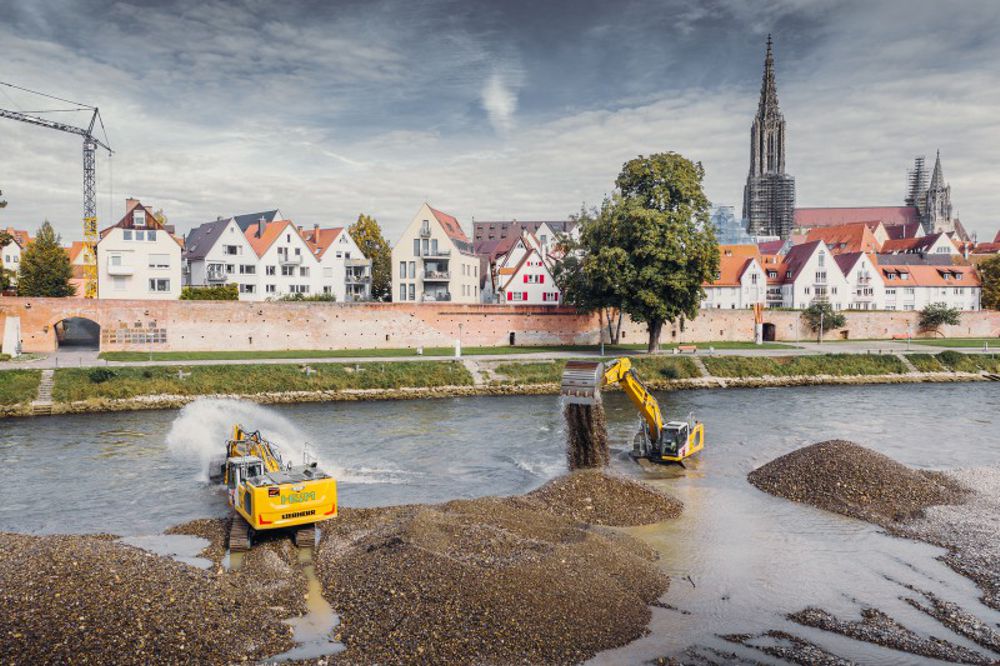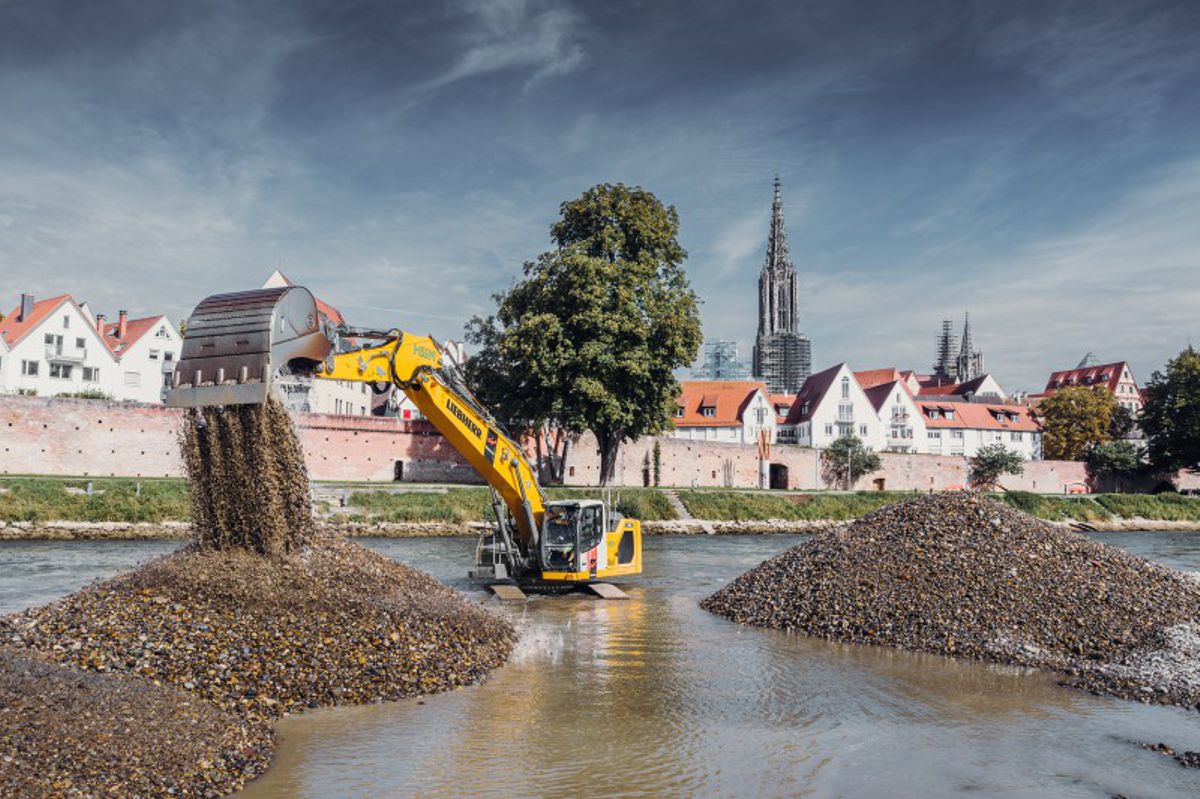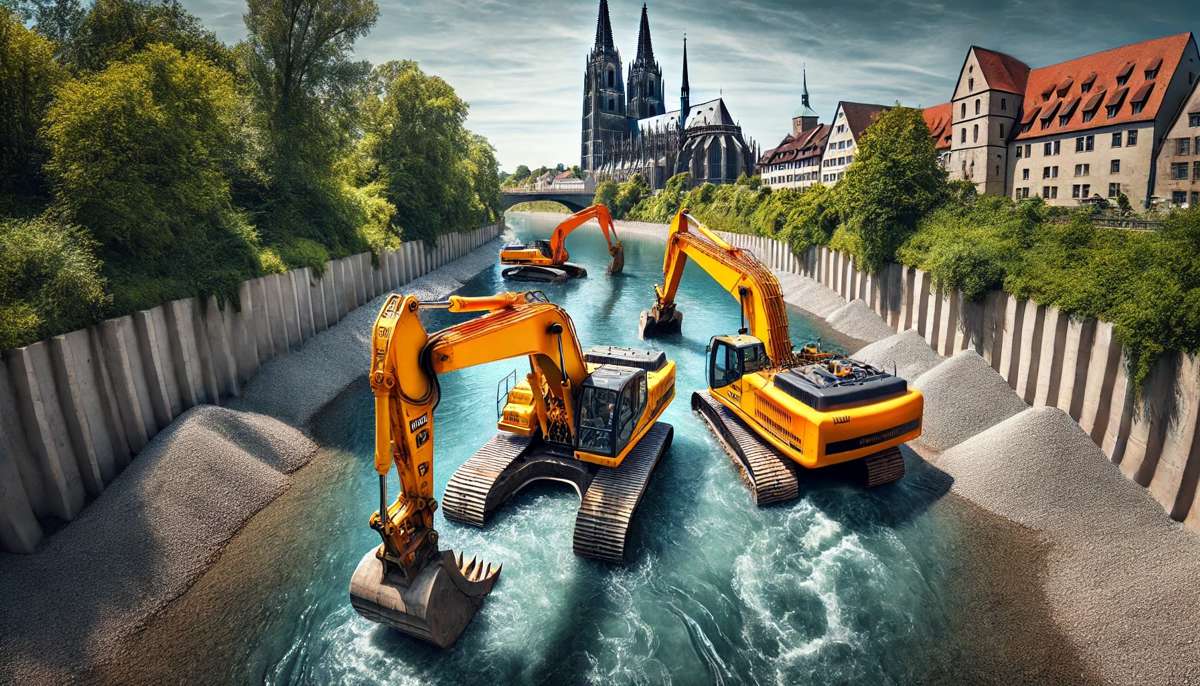Engineering Against the Current to Safeguard the Danube
The Danube River has long been a lifeline for Europe, winding its way through ten countries and serving as a vital corridor for trade, travel, and biodiversity.
However, this mighty river can also turn treacherous. Near Ulm, Germany, the convergence of the Danube and Iller rivers creates significant gravel deposits, narrowing the waterway and heightening flood risks for the city. To combat this challenge, two Liebherr R 938 crawler excavators have been tasked with a monumental job: removing 80,000 tonnes of gravel from the riverbed.
This extraordinary operation is more than just flood prevention. It’s a display of engineering brilliance, showcasing how advanced machinery, innovative thinking, and a commitment to sustainability can come together to protect both people and the environment.
A Complex Problem Demanding Ingenious Solutions
Flooding is a constant threat to river cities like Ulm. When sediment accumulates in riverbeds, it restricts water flow, causing levels to rise during heavy rainfall or snowmelt. The potential for destruction is enormous, impacting not only infrastructure but also livelihoods. In this context, the Danube’s gravel removal project isn’t just maintenance; it’s a lifeline for the region.
What sets this operation apart is its complexity. Removing such a vast amount of material isn’t as simple as dredging the river. Strong currents, unpredictable depths, and underwater obstacles make the task especially challenging. Moreover, the gravel extraction must be executed with care to avoid disrupting the river’s delicate ecosystem.
HEIM Holding GmbH & Co. KG, the construction company overseeing the project, partnered with Nagel Baumaschinen Ulm GmbH to modify two Liebherr R 938 crawler excavators for this unique mission. These excavators, renowned for their durability and precision, were outfitted with additional features to handle the demands of working in a flowing river.

The Power and Precision of Liebherr R 938 Excavators
The R 938 crawler excavator is a technological marvel. Part of Liebherr’s eighth generation of excavators, it combines raw power with meticulous control, making it ideal for demanding applications like gravel removal in dynamic environments.
Equipped with a Liebherr Stage V 4-cylinder engine, the R 938 delivers impressive power while maintaining low fuel consumption and emissions. This efficiency ensures that the machines operate economically without compromising performance. The excavators’ advanced hydraulic systems also play a critical role, enabling precise movements even under the intense resistance of water currents.
Operating in a river presents unique challenges for both the machines and their operators. Visibility is often limited, requiring the excavators to “fish in the dark” for gravel deposits. At times, only the yellow uppercarriages of the machines are visible above the water, creating the illusion of floating excavators. To stabilise their operations, the machines have constructed underwater foundations, allowing them to reach deeper sections of the riverbed.
Balancing Flood Prevention and Sustainability
Flood prevention projects often face scrutiny for their environmental impact. However, this Danube operation has been carefully designed to prioritise sustainability. The gravel removed from the river isn’t discarded; instead, it’s transported to a nearby processing facility, where it’s recycled for construction and other industrial uses. This approach aligns with the principles of the circular economy, reducing waste while creating valuable resources.
The precision of the Liebherr R 938 excavators ensures minimal disruption to the river’s ecosystem. By targeting specific gravel deposits and avoiding over-extraction, the project maintains the delicate balance required to support the Danube’s aquatic life. It’s a fine example of how engineering can address environmental challenges without causing harm.

A Testament to Liebherr’s Legacy
Liebherr’s involvement in this project is a continuation of its 75-year history of innovation. Founded in 1949 in Kirchdorf an der Iller, the family-run company has grown into a global leader in construction machinery. Today, it operates over 150 subsidiaries and employs more than 50,000 people worldwide.
The R 938 excavators used in this operation embody the company’s commitment to quality and sustainability. Designed with operator comfort and safety in mind, these machines are as user-friendly as they are powerful. Their low operating costs and robust build make them a favourite for projects that demand reliability under extreme conditions.
As Liebherr celebrates its 75th anniversary under the slogan “75 Years of Moving Forward,” the Danube project stands as a perfect example of the company’s dedication to advancing sustainable solutions in construction and infrastructure.
Protecting the Danube, Safeguarding the Future
The sight of Liebherr R 938 excavators at work in the Danube has captured the imagination of onlookers. With only their yellow uppercarriages visible above the water, these machines appear to float as they tirelessly move gravel from the riverbed. It’s a surreal image, set against the backdrop of the historic Ulm Minster, that highlights the intersection of technology and the natural world.
Beyond the spectacle, this project underscores the importance of proactive flood prevention. As climate change accelerates, extreme weather events are becoming more frequent, making such initiatives critical for protecting communities. The Danube operation not only addresses immediate flood risks but also sets a precedent for sustainable and innovative engineering solutions.
Liebherr’s role in this project serves as a reminder of what’s possible when cutting-edge technology meets a commitment to environmental stewardship. By ensuring the Danube flows freely and safeguarding Ulm from potential floods, this operation exemplifies how engineering can rise to the challenges of a changing world.




















